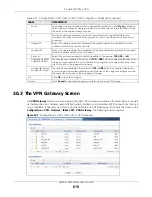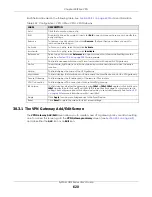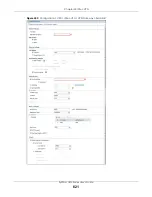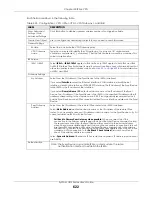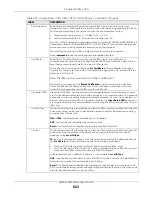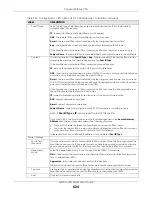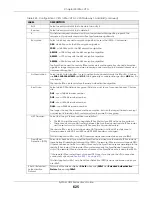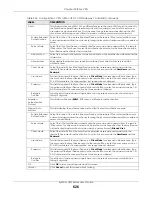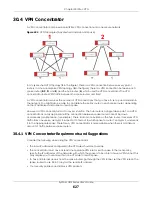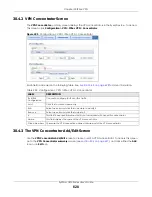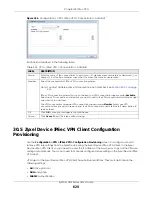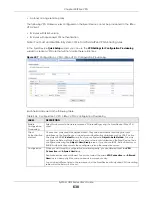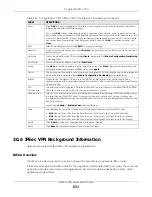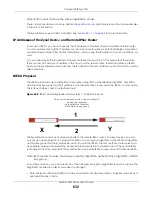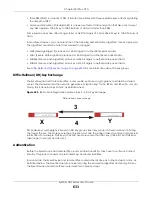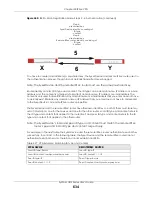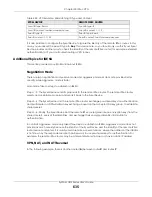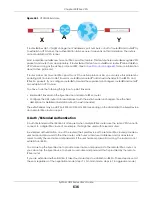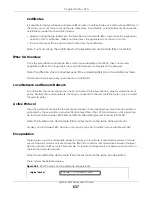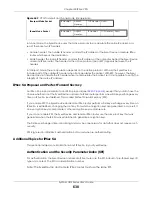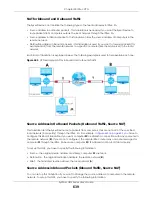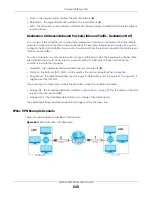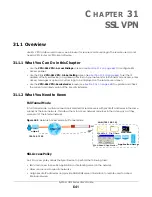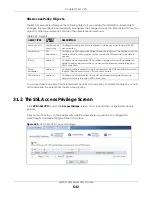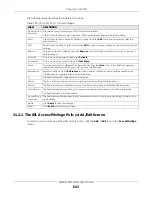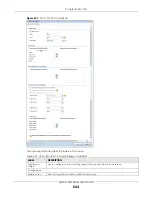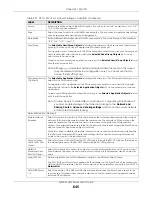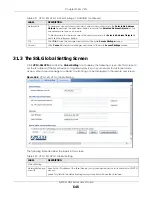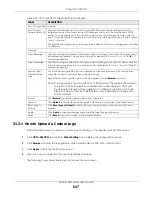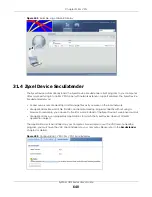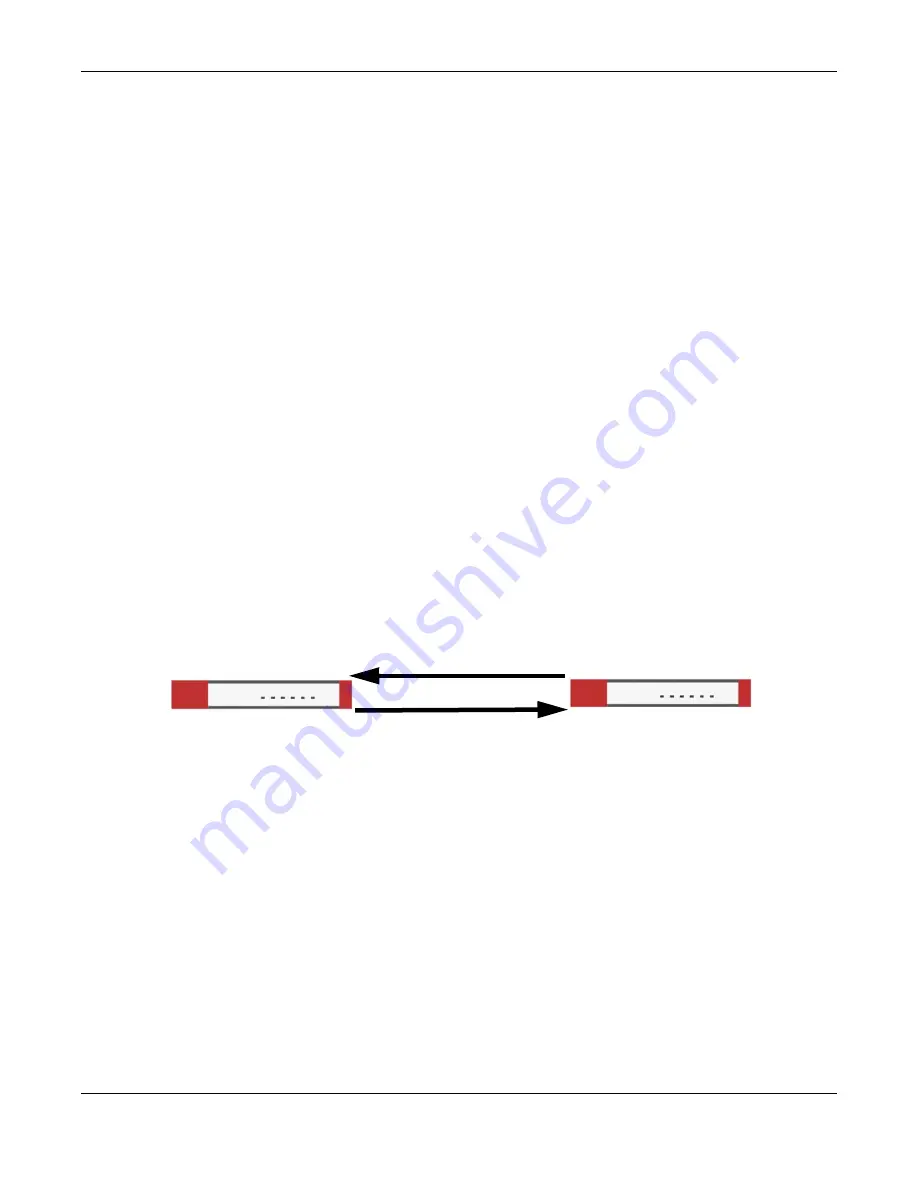
Chapter 30 IPSec VPN
ZyWALL USG Series User’s Guide
633
• Triple DES (3DES) is a variant of DES. It iterates three times with three separate keys, effectively tripling
the strength of DES.
• Advanced Encryption Standard (AES) is a newer method of data encryption that also uses a secret
key. AES applies a 128-bit key to 128-bit blocks of data. It is faster than 3DES.
Some Zyxel Devices also offer stronger forms of AES that apply 192-bit or 256-bit keys to 128-bit blocks of
data.
In most Zyxel Devices, you can select one of the following authentication algorithms for each proposal.
The algorithms are listed in order from weakest to strongest.
• MD5 (Message Digest 5) produces a 128-bit digest to authenticate packet data.
• SHA1 (Secure Hash Algorithm) produces a 160-bit digest to authenticate packet data.
• SHA256 (Secure Hash Algorithm) produces a 256-bit digest to authenticate packet data.
• SHA512 (Secure Hash Algorithm) produces a 512-bit digest to authenticate packet data.
See
Diffie-Hellman (DH) Key Exchange on page 633
for more information about DH key groups.
Diffie-Hellman (DH) Key Exchange
The Zyxel Device and the remote IPSec router use DH public-key cryptography to establish a shared
secret. The shared secret is then used to generate encryption keys for the IKE SA and IPSec SA. In main
mode, this is done in steps 3 and 4, as illustrated next.
Figure 439
IKE SA: Main Negotiation Mode, Steps 3 - 4: DH Key Exchange
DH public-key cryptography is based on DH key groups. Each key group is a fixed number of bits long.
The longer the key, the more secure the encryption, but also the longer it takes to encrypt and decrypt
information. For example, DH2 keys (1024 bits) are more secure than DH1 keys (768 bits), but DH2 keys
take longer to encrypt and decrypt.
Authentication
Before the Zyxel Device and remote IPSec router establish an IKE SA, they have to verify each other’s
identity. This process is based on pre-shared keys and router identities.
In main mode, the Zyxel Device and remote IPSec router authenticate each other in steps 5 and 6, as
illustrated below. The identities are also encrypted using the encryption algorithm and encryption key
the Zyxel Device and remote IPSec router selected in previous steps.
Diffie-Hellman key exchange
3
4
X
Y
Summary of Contents for USG110
Page 27: ...27 PART I User s Guide ...
Page 195: ...195 PART II Technical Reference ...
Page 309: ...Chapter 10 Interfaces ZyWALL USG Series User s Guide 309 ...
Page 313: ...Chapter 10 Interfaces ZyWALL USG Series User s Guide 313 ...
Page 358: ...Chapter 10 Interfaces ZyWALL USG Series User s Guide 358 ...
Page 373: ...Chapter 10 Interfaces ZyWALL USG Series User s Guide 373 ...

